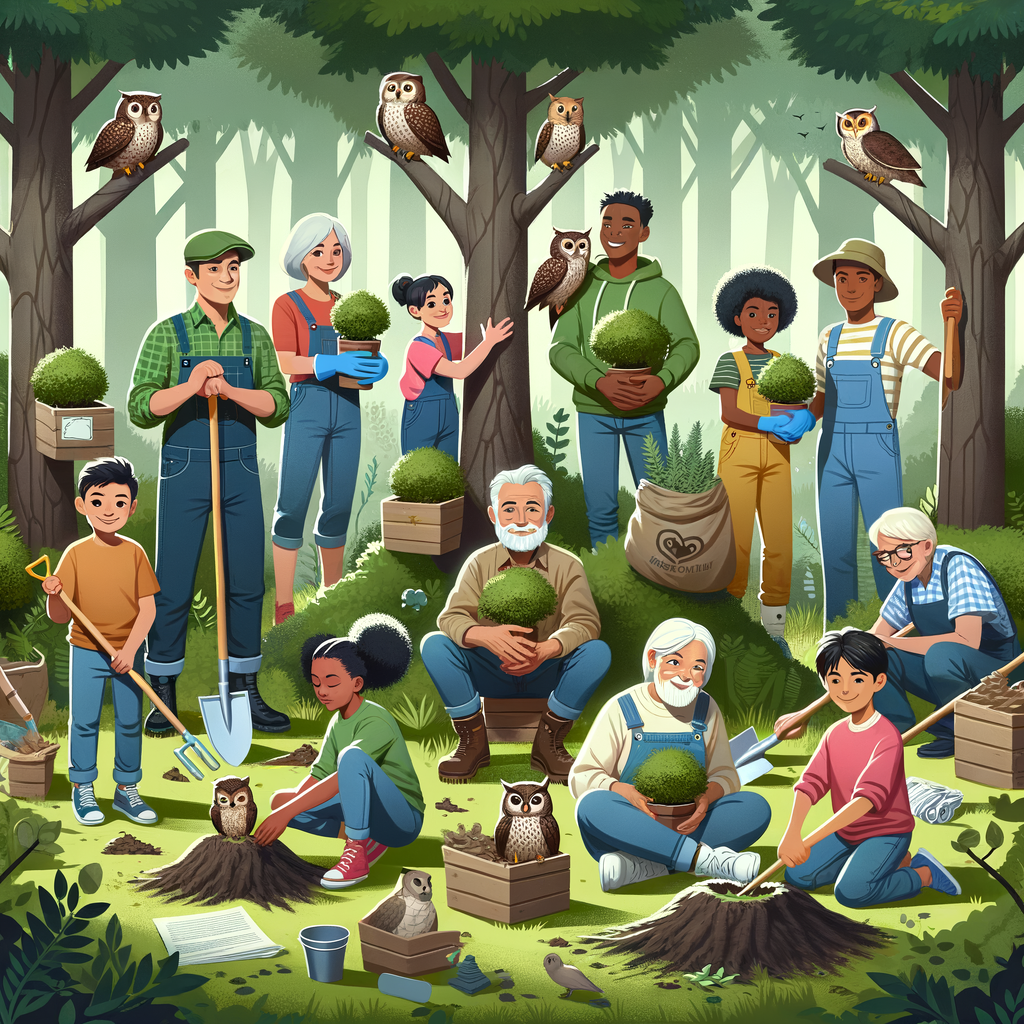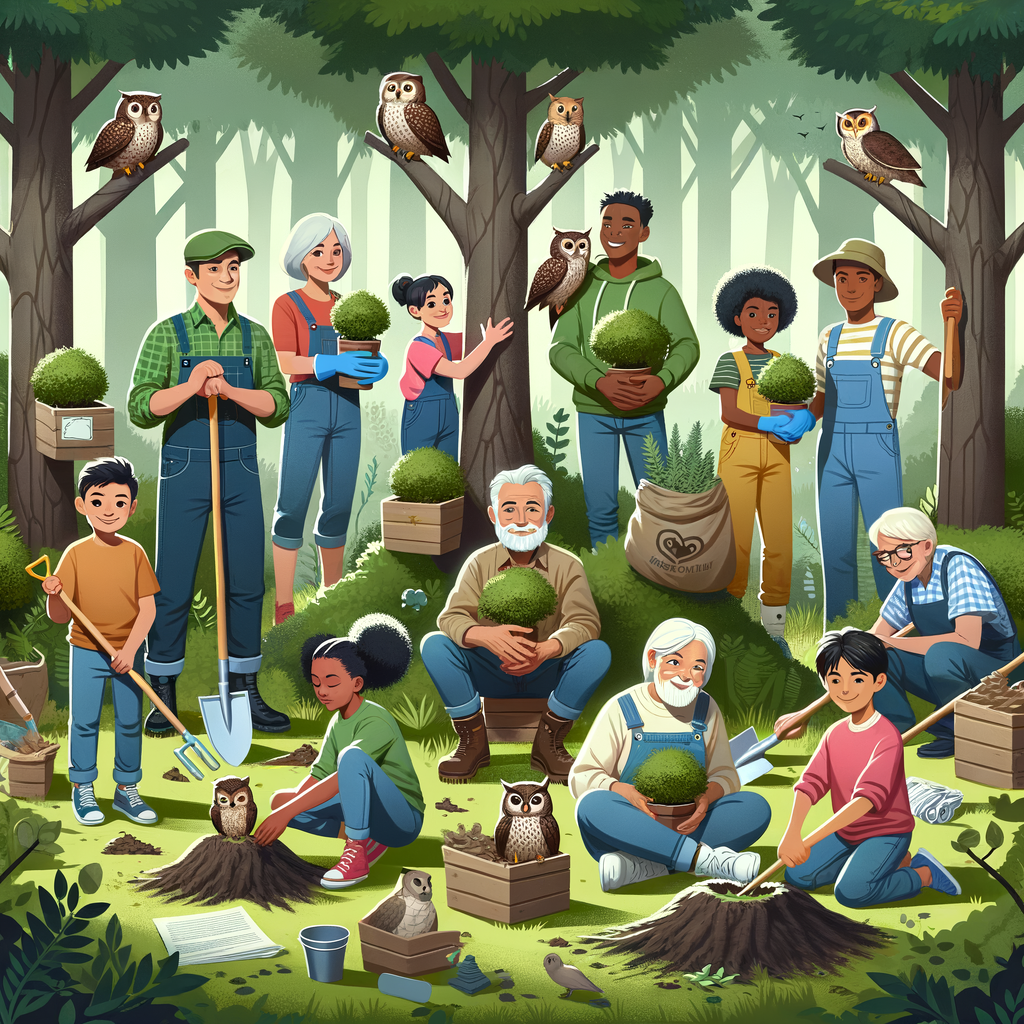
Introduction to Owl Conservation
Owls are amazing birds that play a big role in our environment. They help control the population of small animals like mice and insects. But, they need our help to survive.
- Importance of owl conservation: Owls are important for keeping nature balanced. They eat pests that can harm crops and spread diseases. By saving owls, we also protect our food supply and health.
- Current state of owl population: Sadly, many owl species are in trouble. Some types of owls are becoming rare. For example, the Barn Owl is facing a decline in numbers.
- Threats to owl habitats: Owls are losing their homes because of human activities. Cutting down trees, building cities, and using pesticides are some of the reasons why owls are struggling. We need to protect their habitats to help them survive.
| Owl Species | Status | Main Threat |
|---|---|---|
| Barn Owl | Declining | Habitat loss |
| Snowy Owl | Stable | Climate change |
| Spotted Owl | Endangered | Deforestation |
By understanding these issues, we can take steps to save owls. Together, we can make a difference in their future.
Community Involvement in Wildlife Conservation
Benefits of Community Involvement
-
Increased awareness and education
When communities get involved in wildlife conservation, they learn more about the animals and plants around them. This knowledge helps people understand why it’s important to protect these species. For example, schools can teach kids about local wildlife, making them more aware of their environment.
-
Local ownership and responsibility
When people in a community take part in conservation efforts, they feel a sense of ownership. This means they are more likely to take care of their environment. They understand that their actions can make a big difference. For instance, a village that plants trees to create owl habitats will feel proud and responsible for those trees.
-
Effective monitoring and enforcement
Communities can help keep an eye on local wildlife and report any problems. This makes it easier to protect animals and plants. Local people know their area best and can quickly spot changes or threats. For example, if someone sees illegal hunting, they can report it to authorities right away.
Examples of Community Involvement in Wildlife Conservation
- Case Study 1: The Snowy Owl Project in AlaskaIn Alaska, local communities have come together to protect the snowy owl. Volunteers help monitor owl populations and their habitats. They also educate others about the importance of these majestic birds. This project has led to a better understanding of snowy owls and how to protect them.
- Case Study 2: The Barn Owl Trust in the UKThe Barn Owl Trust in the UK involves local residents in conservation efforts. People help by building and maintaining nest boxes for barn owls. They also participate in surveys to track owl numbers. This community effort has increased the barn owl population in many areas.
- Case Study 3: The Burrowing Owl Conservation Network in CaliforniaIn California, the Burrowing Owl Conservation Network works with communities to protect burrowing owls. Volunteers help restore habitats and monitor owl nests. They also raise awareness about the threats these owls face. This network has made significant progress in protecting burrowing owls.
Protecting Owl Habitats: A Community Effort
Local Conservation Efforts
- Community-based owl protection initiatives: Many towns and cities have started local groups to help protect owl habitats. These groups organize events like tree planting and clean-up drives. For example, in Springfield, a local group planted over 500 trees to create new homes for owls.
- Local laws and regulations: Some areas have laws to protect owls and their habitats. These laws can include restrictions on cutting down trees or building in certain areas. For instance, in California, it is illegal to disturb owl nests during the breeding season.
- Partnerships with conservation organizations: Communities often work with conservation groups to protect owls. These partnerships can provide resources and expertise. For example, the Audubon Society works with local communities to monitor owl populations and protect their habitats.
| Effort | Example |
|---|---|
| Community-based initiatives | Springfield’s tree planting event |
| Local laws | California’s nesting protection law |
| Partnerships | Audubon Society collaborations |
Owl Habitat Restoration
- Reforestation efforts:
Forests provide homes and food. Many groups plant trees to help owls. For example, in the Pacific Northwest, reforestation has helped the Spotted Owl population grow. - Protection of nesting sites:
Protecting these sites is important. Some communities put up signs to keep people away from nesting areas. This helps owls feel safe and raise their young. - Control of invasive species:
They take over habitats and food sources. Controlling these species helps owls thrive. For example, removing invasive plants can make room for native plants that owls need.
Engaging Communities in Owl Conservation
Education and Awareness
By informing the community, we can work together to protect these amazing birds. Here are some ways to engage the community:
- Community workshops and seminars: These events are great for sharing knowledge about owls. Experts can teach people about owl behavior, habitats, and the importance of conservation. For example, a workshop might include a presentation on the different species of owls found in the area and their roles in the ecosystem.
- School programs: Educating children about owls can foster a lifelong appreciation for wildlife. Schools can include owl-related topics in their science curriculum. Activities like owl pellet dissections and field trips to nature reserves can make learning fun and engaging.
- Public awareness campaigns: These campaigns can reach a wide audience. They might include posters, social media posts, and local news stories. For instance, a campaign could highlight the threats owls face and how people can help, such as by preserving natural habitats and reducing the use of pesticides.
| Method | Details |
|---|---|
| Community workshops and seminars | Events where experts share knowledge about owls and conservation efforts. |
| School programs | Educational activities in schools to teach children about owls. |
| Public awareness campaigns | Efforts to inform the public about owl conservation through various media. |
By participating in these activities, communities can play a vital role in protecting owls. Together, we can make a difference!
Volunteer Opportunities
Getting involved in owl conservation can be a rewarding experience. Here are some ways you can help:
- Local owl monitoring programs: These programs allow you to help track owl populations. Volunteers often go on night walks to listen for owl calls. This data helps scientists understand owl numbers and health.
- Habitat restoration projects: Owls need safe places to live. Volunteers can help by planting trees and cleaning up natural areas. This work makes sure owls have the right environment to thrive.
- Community fundraising events: Raising money is key for conservation projects. You can join events like bake sales, car washes, or charity runs. These events bring people together and support important work.
Volunteering not only helps owls but also teaches you about wildlife. It’s a great way to make a difference in your community.
Future of Owl Conservation: A Community-Driven Approach
Challenges and Opportunities
- Overcoming barriers to community involvementOne of the main challenges in owl conservation is getting people involved. Many communities face barriers like lack of awareness, resources, or time. To overcome these, we need to educate people about the importance of owls. For example, schools can include owl conservation in their curriculum. Local events can also help spread the word.
- Expanding community-driven conservation effortsBy expanding these efforts, we can do more. This means more people joining local conservation groups and more projects to protect owl habitats. For instance, in some areas, community members have started planting trees to create new habitats for owls.
- Building strong partnerships for owl conservationWhen communities, governments, and organizations work together, they can achieve more. For example, a partnership between a local community and a wildlife organization can lead to better protection of owl habitats. These partnerships can also help secure funding and resources.
Key Takeaways
- The vital role of community in owl conservation: Local groups can monitor owl populations, report sightings, and help maintain habitats. For example, in some areas, community volunteers have successfully increased owl numbers by creating safe nesting sites.
- The power of education and awareness: Schools and local organizations can host workshops and events to teach children and adults about owls. According to a study by the Audubon Society, awareness programs have led to a 20% increase in community participation in owl conservation efforts.
- The future of owl conservation: The future looks bright when communities come together. With ongoing efforts and increased awareness, we can ensure that owls continue to thrive. Future conservation plans include more community-driven projects and stronger partnerships with wildlife organizations.






